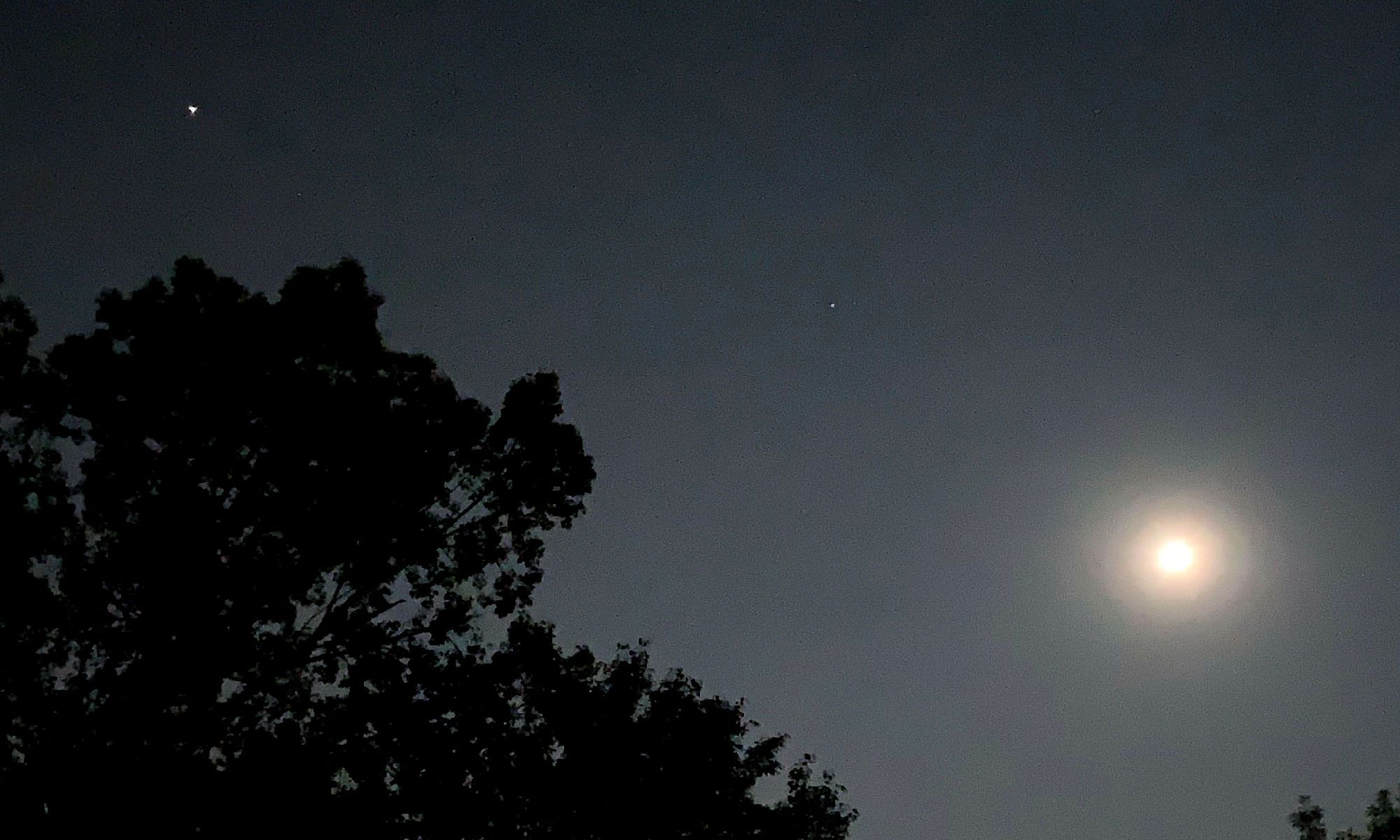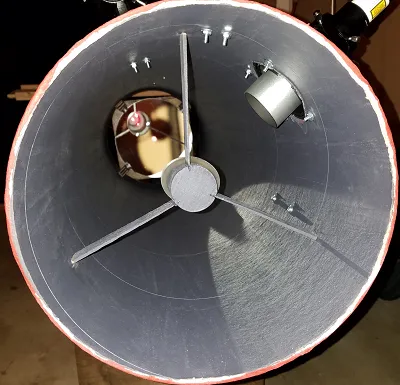April 30th, 2018, 10:45 p.m. local time
I will say this for cloudy weekdays – at least I don’t have to make up excuses for not taking my telescope and camera out on a “school night.” Last night though presented another mostly clear sky and this time with beautiful warm spring temperatures. It was too tempting to not go outside to do something, anything
Not wanting to take all of the equipment out, I settled for the second easiest path – using my binoculars (the easiest is no equipment at all). It was the perfect night for it anyway, just to look up at many different, interesting parts of the sky. So in the warm air with a cool gusting breeze, here is what I observed.
Spring Triangle
My initial objective was prompted by Scott Levine’s referencing of the “Spring Triangle” formed by Spica, Arcturus, and Regulus. I wanted to see how far apart all three stars were to gauge if they could be photographed together. The Spring Triangle is quite a bit larger than the already large Summer Triangle of Deneb, Vega, and Altair. There may be a small chance of capturing all three in the very widest view my camera and lens can reach. I hope to try soon.
Since I had my binoculars with me, I decided for fun to note the color of each of these three spring stars.
- Arcturus – orange
- Spica – blue
- Regulus – mostly white with maybe a little blue
Did I get the colors right? Searching for information on each star, I learned that:
- Arcturus is a red giant
- Spica is a type of binary star dominated by a blue giant
- Regulus is a multi-star system that appears to be dominated by a white-blue star
So with the exception of calling Arcturus orange, I guessed correctly on each of them.
Moon
At this time last night the Moon had just cleared my tree tops, allowing me to take images through my telescope. See yesterday’s post. Tonight, it was still shrouded by many bare tree branches. It was visible, but even through binoculars it was a difficult to focus on any of the Moon’s surface detail.
Jupiter
Jupiter keeps coming, very slowly, up and up each night. It still clears my trees too late every evening to get the telescope out just yet (on a school night). But I could still see it through the trees. Tonight it was ahead of the Moon almost as much as it was trailing the Moon the prior night.
Through the binoculars I noticed a faint dot just ahead of the planet on its elliptic path. Could that be one of its moons? Searching later for the exact position of the moons at that time showed this:
So I was seeing either Ganymede or Callisto, both of which were far to Jupiter’s right at the time. If I had known about this positioning while viewing them, I would have tried to pay much closer attention to see both moons even through the trees.
Coma Berenices
I admit I have become a bit infatuated with this asterism. It is too faint in my light polluted skies to see unaided, but pops our as a gem of stars through binoculars. If there is a single example of when binoculars view is superior over any telescope view, it is with Coma Berenices.
Sometimes called the tail of Leo, first find Leo above, and then it is not too difficult to scan Eastward until you locate this amazing batch of stars.
Gemini
My favorite friends of Orion and Taurus are all but gone into the West this viewing season, and Gemini follows close behind. I used my binoculars to trace out the upper bodies of Castor and Pollux, a task that is harder than it sounds through a magnified view.
Mizar and Alcor
I don’t know why but I always enjoy spotting the pairing of stars Mizar and Alcor in Ursa Major. It may be because it was the first “double” I observed when I resumed my astronomy hobby several years ago. It’s also a fun one to show onlookers and guests who have never seen a double star magnified before.







